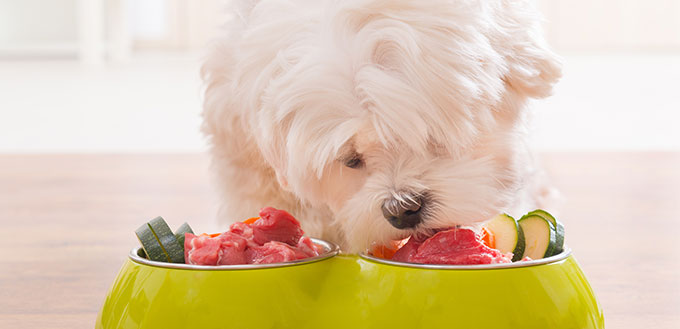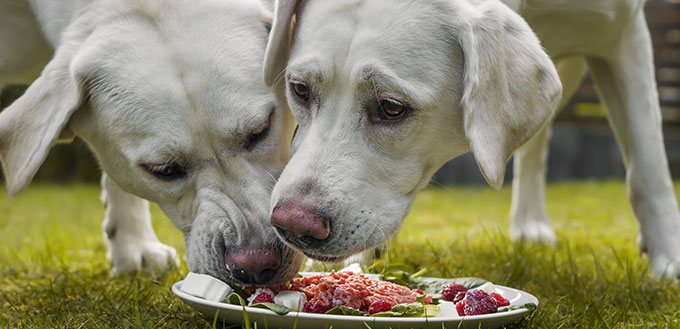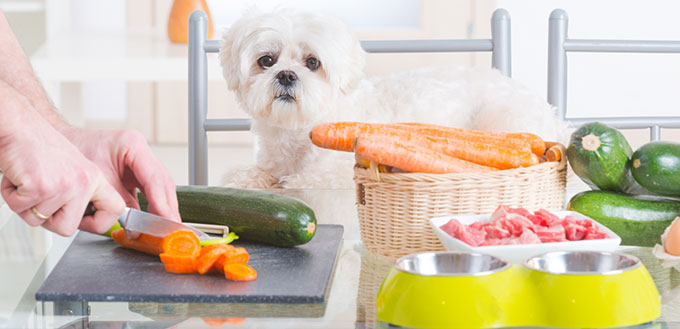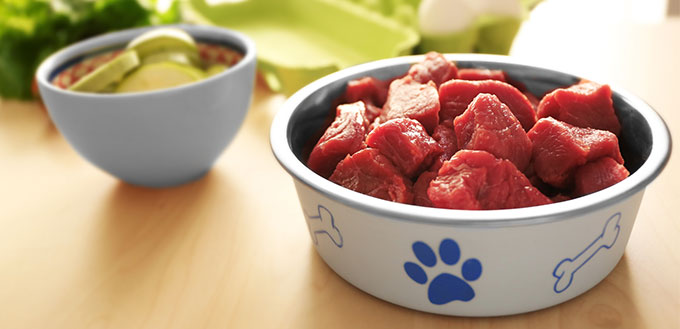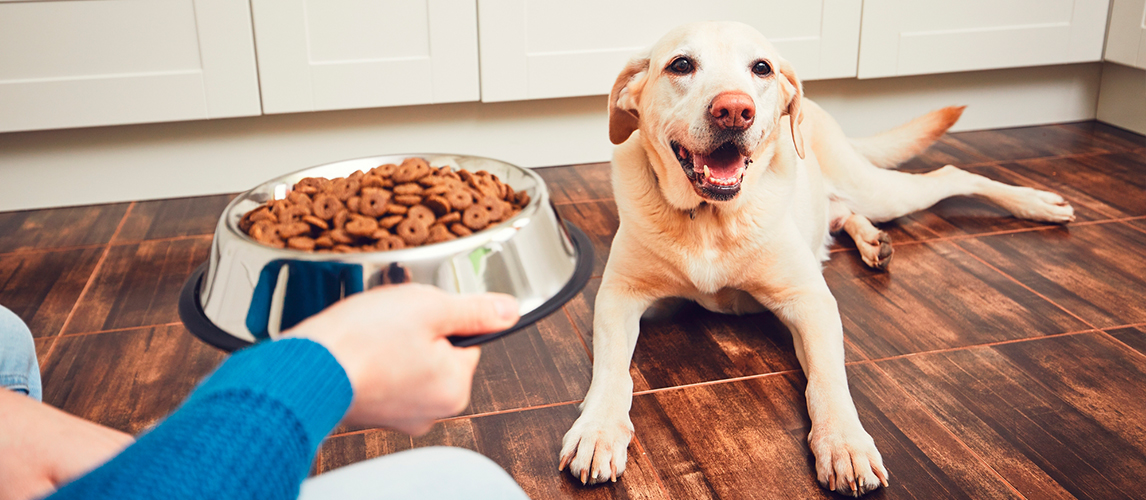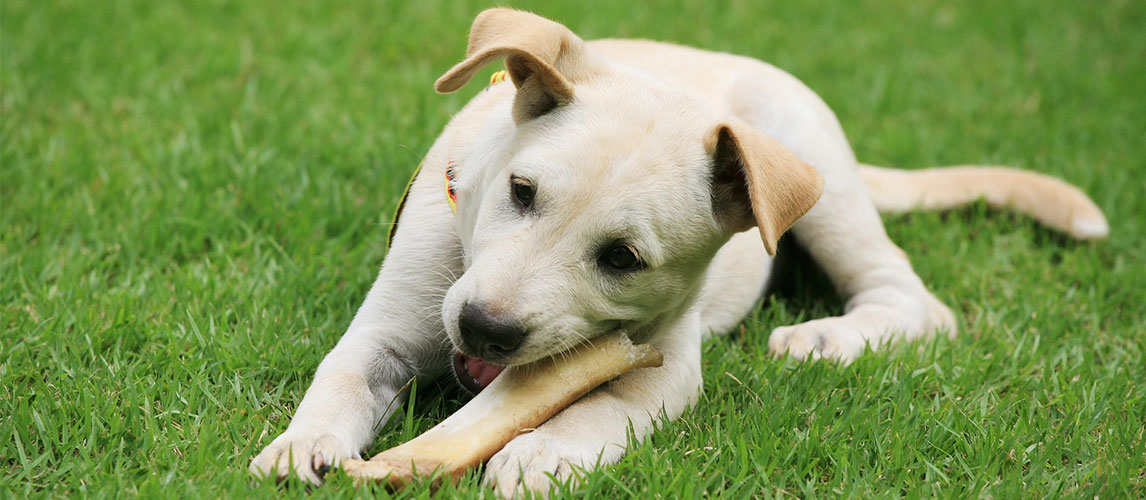Rather than feeding your dog the same thing day in, day out, you may want to add a bit of variety to their diet. For some people, this simply means buying another brand of kibble, but if you want to be a little more creative, you could try making some homemade dog food. In fact, this doesn’t have to be too difficult, and many of the foods that dogs eat are the same ones that we do. The other major benefit to making dog food is that you have total control of what goes in it.
In this blog post, we are going to get you started with seven possible recipe ideas. But first, let’s look at some of the benefits when you make your own dog food.
Benefits of Homemade Dog Food
Since you have a higher level of control of what is going in your dog’s food, you can make sure that it is nutritionally balanced. After all, if this is important to you, why would it not be the same for your canine companion.
Foods that are highly processed tend to not have as high a level of nutritional value. When the food is fresh, you know what your dog is getting, and you don’t have to be confused by the preservatives and additives. Homemade diets are particularly popular for dogs suffering from gastrointestinal sensitivity, allergies, or skin problems.
Another benefit of knowing some recipes is that you always have something to whip up for your dog, which is useful if you happen to run out of dog food at any time.
Basic Nutritional Guidelines for Creating Homemade Dog Food
Dogs come in all different shapes and sizes, so there is no single rule to follow for all of them. There are a few different factors to take into account such as your pup’s breed, weight, activity level, and individual dietary requirements. As a general rule, there are six things that make up a balanced diet for dogs: protein, fat, carbs, water, vitamins, and minerals. So, let’s look at the types of food that your dog can consume to obtain these different things.
- Protein
Meat and other animal products should make up around half of your dog’s diet. Some of the most common possibilities include beef, fish, turkey, lamb, and chicken. You can also add in some cooked eggs as another possibility. Protein is important in the maintenance and growth of cells, organs, antibodies, tissues, enzymes, and hormones.
- Fat
Fat also largely comes from meat, but you need to be particularly careful if you are planning a raw diet as this can result in obesity. Helping with the absorption of some vitamins, it also helps to insulate and protect internal organs, as well as assisting in the growth of good skin and hair.
- Carbohydrates
Though not as important as they are to human beings, carbohydrates can still be useful in supplying glucose to organs and keeping the intestines running healthily. Some possible sources include corn, beans, and rice.
- Vitamins
Dogs need a full range of vitamins including A, B, C, D, E and K. As well as helping with weight loss, they can also assist with immunity from diseases, as well as being important in eye and skin health. While they can come from natural sources like fish, one of the main problems that people have with homemade food diets is that they don’t contain enough vitamins, which is why supplements may be required.
Related Post: Fish Oils For Dogs
- Minerals
Providing a whole host of benefits including strong teeth and bones, some of the minerals required by dogs include magnesium, zinc, iron, potassium, and calcium.
- Water
Accounting for 60-70% of your dog’s body weight, water is an essential aspect of your dog’s diet. Dehydration can cause all sorts of health issues, and while your dog can get hydration from their food, you should also put water down for them so they can drink whenever they like.
You May Also Like: Dog Water Fountain
7 Homemade Dog Food Recipes – How to Make Dog Food
Beef Stew
Who doesn’t like a nice warming beef stew? And it turns out that it makes the perfect wintertime treat for your dog as well.
Ingredients:
- Beef stew meat
- 1 potato
- 1 sweet potato
- ½ cup of carrots
- ½ cup of water
- ½ cup of white flour
- 1 tbsp of olive oil
Preparation:
First, you will need to peel the skin from the potato and sweet potato. Next, cut them up into chunks. Remember that your dog will be eating the stew, so they need to be an appropriate size for their mouth. Bake them in the oven for eight minutes until they are soft on the inside. Chop up the beef if it is not already. Now is the time that you will need to heat some oil up in a frying pan and sauté the beef cubes. Once it is cooked through, remove the beef and add flour and water. Once you have a nice thick gravy, you can add the beef back in, alongside the potatoes and chopped carrots. You should leave it stewing for at least 10 minutes, but longer if you would like to soften up the ingredients even more. This may be important if your pooch is suffering from dental issues of any kind.
Turkey, Rice, and Vegetable Mix
If you are looking for a nice low-fat and low-calorie treat, this is an excellent choice that is not going to add too many inches to your pooch’s waistline.
Ingredients:
- Six cups of water
- One pound of ground turkey
- Two cups of brown rice
- One tsp of dried rosemary
- Broccoli, carrots, and cauliflower or other vegetables
Preparation:
You will need a thick cooking pot like a Dutch oven. Put the water, turkey, rice, and rosemary inside. Stir everything over a low heat, ensuring that the meat is properly broken up and distributed throughout the mixture. You can then bring it to the boil, before reducing the heat to a low setting. Now, you will want to leave it for around 20 minutes. Add the vegetables that you have chosen for the mix and let everything cook for a further few minutes. Now, turn off the heat and allow it some cooling time. You can either serve it straight away or put it in the refrigerator until your pooch is ready to eat. Make a large portion and you will have a few meals ready to go.
Pumpkin Dog Biscuits
Sometimes, you want to offer your dog some treats rather than a whole meal. These pumpkin biscuits will prove to be an excellent digestive aid, especially if you have a pooch who suffers from tummy trouble.
Ingredients:
- Two eggs
- A can of pumpkin puree
- ½ cup of oats
- Three cups of flour
- Three tbsp of peanut butter
- ½ teaspoon of cinnamon for flavoring
Preparation:
Start by preheating the oven to 350 degrees. Get a small bowl and mix together the oats, cinnamon, and flour. You will also need a larger bowl to whisk the eggs. Add in the pumpkin and peanut butter so it is all nicely combined. You should stir everything enough so that the wet ingredients become dry. Combine all the ingredients and roll it out into dough using a rolling pin on a floured surface. Dust your hands with some flour to prevent the mixture from sticking. Now, put your biscuits in the oven for around 30 to 35 minutes until they turn a nice golden-brown color. Leave them to cool properly before offering them to your dog. When you feel the biscuits, the texture should be hard.
Related Post: Dog Safe Peanut Butter Treats
Chicken Jerky Strips
If you are looking for a grain free homemade dog food recipe, this one is a great option that means that your dog doesn’t have to chew on rawhides. When you have made them, you can keep them in an air-tight food container for up to two weeks.
Ingredients:
- Two to four skinless chicken breasts
Preparation:
Since there is only one ingredient that makes up this dog food, you can decide how many you want to make. Start by preheating your oven to 200 degrees. Trim off all the fat from the chicken breasts. Using a paring knife, you can then cut everything into strips of roughly 1/8 inch thick. Put them on a baking sheet and in the oven for around two hours. When they are done, the strips should be hard and dry. As always, you should make sure that these jerky treats are entirely cool before offering them to your pooch to prevent them from burning their mouth.
Frozen Banana Pieces
So far, we have mainly talked about food that is good in the wintertime, but these frozen banana pieces are an excellent summertime treat to cool your pup down when the temperatures start rising.
Ingredients:
- Four cups of plain yogurt
- Two tbsp of peanut butter
- Three bananas
Preparation:
Choose some ripe bananas and peel and mash them. Also, it is important to mention here that the peanut butter that you choose should be xylitol free as this is toxic to dogs. You will need to blend all the ingredients together into a puree. Now, you can divide up the mixture and pour it into a place where it is going to be frozen. Ice trays or toddler popsicle trays are both good options. Put them in the freezer until they start to firm up. Now, they are ready to go for your dog to enjoy any time over the next couple of weeks.
Homemade Vegetable Smoothie
If you are looking for a simple and nutritious drink to give to your dog, this is a great option. While this is an excellent source of vitamins and minerals, you should bear in mind that it is only suitable to give every few days as dogs cannot only enjoy a vegetable-based diet.
Ingredients:
- Vegetables such as carrots, green beans, and spinach
- Fruit such as peaches, bananas, and pears
- Fruit juice excluding grape juice
- Four tbsp of yogurt
- One tbsp of cream cheese
Preparation:
All you will need to do is combine everything in a blender until it is smooth. You can then pour it into your dog’s bowl for them to enjoy. You may need to do a bit of experimentation until you work out your pooch’s individual tastes, what they enjoy, and what they do not.
Raw Fish Dinner
Raw food diets are increasingly popular choices for modern pet owners. This fish dinner offers plenty of protein and nutrients that help the healthy functioning of your four-legged friend.
Ingredients:
- Two pounds of fish fillets
- Two eggs
- One can of pink salmon
- Two tbsp of oregano
- Four tbsp of parsley
- One tbsp of bone meal
- ½ cup of cooked rice
Preparation:
This is another simple dish to prepare. All you need to do is combine everything in a blender – barring the cooked rice. Once it is all mixed together, you can add the rice and serve everything in ball-format.
Good Cooking Practices
While experimentation in the kitchen may be practically encouraged when we are preparing meals for ourselves, the same shouldn’t be said for dogs. Our stomachs and dietary requirements are totally different, and there are some foods that are fine for us which can be poisonous to dogs. So, make sure that you get the recipes from reliable sources and stick to them closely. If you are unsure about anything, it is best left out. You can always discuss with your vet whether or not it is safe to offer to your dog.
When you are cooking animal products, you should make sure to cook everything through properly to kill off any potentially harmful bacteria. You should also cook all vegetables thoroughly as this makes them easier to digest and it is less likely that your dog is going to have any trouble digesting them. If you have only ever given your dog kibble before, you don’t want to rush into offering them a homemade diet. Otherwise, it is more likely that they are going to suffer from digestive issues. Ideally, you should be making the food to match the digestive needs of your dog as closely as possible.
Cooked or Raw Food
There is some debate as to whether cooked or raw food is better for your pooch. Cooking food has a number of advantages. First, it brings certain nutrients to the forefront and makes them more readily available. Since canines can’t digest carbs in their mouths, cooking makes digestion easier. Perhaps an even clearer advantage is that it kills any bacteria or germs that may be present in the food. But dogs have stronger digestive systems which are designed to kill off many microorganisms and other tough materials. If your dog is not used to raw meat, this may be the best way of introducing them to a homemade diet.
Raw dog food advocates state many advantages involved in offering canines this type of food. Firstly, a lot of the nutrients, minerals, vitamins, antioxidants, and enzymes are retained by not cooking the food. Plus, the natural moisture content is preserved, which makes digestion easier for pooches. In some cases, food is safer when offered raw. For example, when bones are cooked, this makes them more likely to splinter, which could cause blockages in your dog’s windpipe or digestive system. However, raw bones are more pliable and digestible. Also, you don’t have to go through the effort of cooking anything. However, you are probably best to consult with your vet before switching to a raw food diet to find out more information.
You may also like our guide on simple ways on: How To Soften Dog Food
Foods to Avoid
There are some food items commonly found in our cooking which we should always avoid giving to dogs as they can be toxic. These include: onions, garlic, chocolate, avocados, grapes, raisins, alcohol, raw bread dough, and macadamia nuts. There are other food items out there that can be harmful as well. As a rule of thumb, if you are not sure, it is best to avoid them. You can always consult with your vet and use the additional ingredients if you find out that they are okay.
Final Thoughts
We have tried to offer you seven varied homemade dog food recipes that give you some good options to prepare for your pooch. All of them are relatively straightforward to make. Whenever you are introducing anything new into your dog’s diet, it is always worth doing so slowly. This way, you can see how your dog reacts, before deciding whether these are going to be regular additions to their mealtime. Ultimately, you have to be the one to choose whether you would like to continue offering your dog kibble or switch them over to an entirely homemade diet. There are pros and cons to both approaches which are worth taking into account.
Sources:
- Colleen Cancio, 5 Dog Treat Recipes That Kids Can Make, HowStuffWorks
- Sherry Woodard, Feeding Your Dog, Best Friends Animal Society


